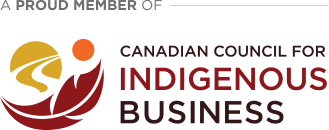Your cart is currently empty!

ISO 30434:2023
ISO 30434:2023 Human resource management – Workforce allocation
CDN $312.00
Description
This document describes a framework of processes, practices and management activities for allocating work to workers. Its high-level principles and processes are applicable to all allocation methods and workforce types. It can be used in all types of organizations and industry sectors, and from small teams to large complex organizations. It applies to all workforce sourcing methods, whether the workforce is made up of internal employees or externally sourced workers.
This document also addresses the relationship between allocation decisions and stakeholders, including operations, finance, human resource functions and, most importantly, workers.
This document explains how to create an allocation framework, design an allocation process and document, communicate, measure and improve the process. It also suggests preventative actions to stop or mitigate undesirable outcomes.
This document does not address:
a)    absence management or planning or timekeeping;
b)    role or skill-based workforce planning (refer to ISO 30409);
c)    labour standards;
d)    training or succession planning;
e)    recruitment (refer to ISO 30405 and ISO 30409);
f)     compensation or performance reviews;
g)    health and safety (refer to ISO 45001);
h)    work ergonomics (refer to ISO 6385);
i)     methods of organizing specific types of work (e.g. lean manufacturing, agile project management);
j)     automation of tasks using “digital workers”, such as physical robots and artificial intelligence bots.
Annexes to this document describe details and foundational concepts of allocation applied in various industries as examples to support the theory.
Edition
1
Published Date
2023-06-12
Status
PUBLISHED
Pages
38
Format 
Secure PDF
Secure – PDF details
- Save your file locally or view it via a web viewer
- Viewing permissions are restricted exclusively to the purchaser
- Device limits - 3
- Printing – Enabled only to print (1) copy
See more about our Environmental Commitment
Abstract
This document describes a framework of processes, practices and management activities for allocating work to workers. Its high-level principles and processes are applicable to all allocation methods and workforce types. It can be used in all types of organizations and industry sectors, and from small teams to large complex organizations. It applies to all workforce sourcing methods, whether the workforce is made up of internal employees or externally sourced workers.
This document also addresses the relationship between allocation decisions and stakeholders, including operations, finance, human resource functions and, most importantly, workers.
This document explains how to create an allocation framework, design an allocation process and document, communicate, measure and improve the process. It also suggests preventative actions to stop or mitigate undesirable outcomes.
This document does not address:
a)    absence management or planning or timekeeping;
b)    role or skill-based workforce planning (refer to ISO 30409);
c)    labour standards;
d)    training or succession planning;
e)    recruitment (refer to ISO 30405 and ISO 30409);
f)     compensation or performance reviews;
g)    health and safety (refer to ISO 45001);
h)    work ergonomics (refer to ISO 6385);
i)     methods of organizing specific types of work (e.g. lean manufacturing, agile project management);
j)     automation of tasks using “digital workers”, such as physical robots and artificial intelligence bots.
Annexes to this document describe details and foundational concepts of allocation applied in various industries as examples to support the theory.
Previous Editions
Can’t find what you are looking for?
Please contact us at:
Related Documents
-

ISO 18115:2021 Surface chemical analysis – Vocabulary – Part 2: Terms used in scanning-probe microscopy
0 out of 5CDN $76.00 Add to cart -

ISO 55000:2024 Asset management – Vocabulary, overview and principles
0 out of 5CDN $173.00 Add to cart -

ISO 374:2024 Protective gloves against dangerous chemicals and micro-organisms – Part 1: Terminology and performance requirements for chemical risks
0 out of 5CDN $115.00 Add to cart -

ISO 24021:2024 Light gauge metal containers – Vocabulary and classification – Part 2: General cans
0 out of 5CDN $173.00 Add to cart







